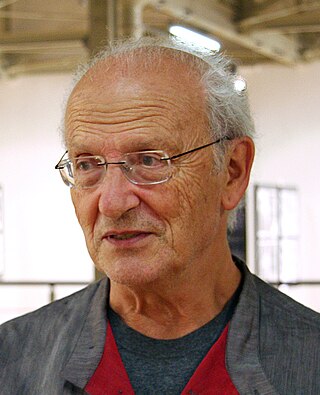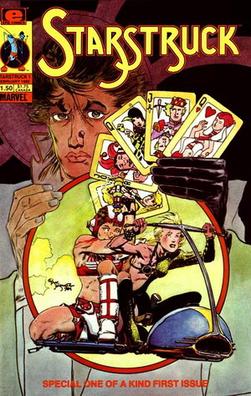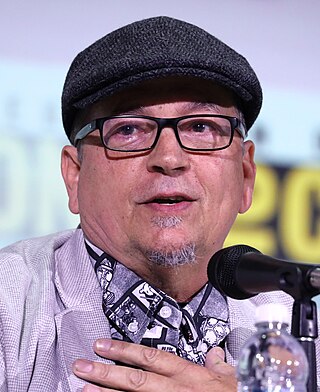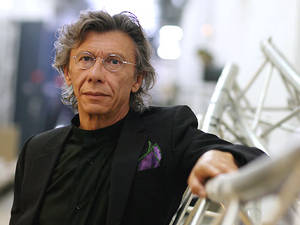
National Lampoon was an American humor magazine that ran from 1970 to 1998. The magazine started out as a spinoff from The Harvard Lampoon.

Richard Corben was an American illustrator and comic book artist best known for his comics featured in Heavy Metal magazine, especially the Den series which was featured in the magazine's first film adaptation in 1981. He was the winner of the 2009 Spectrum Grand Master Award and the 2018 Grand Prix at Angoulême. In 2012 he was elected to the Will Eisner Award Hall of Fame.

Jean Henri Gaston Giraud was a French artist, cartoonist and writer who worked in the Franco-Belgian bandes dessinées (BD) tradition. Giraud garnered worldwide acclaim predominantly under the pseudonym Mœbius for his fantasy/science-fiction work, and to a slightly lesser extent as Gir, which he used for the Blueberry series and his other Western themed work. Esteemed by Federico Fellini, Stan Lee, and Hayao Miyazaki, among others, he has been described as the most influential bande dessinée artist after Hergé.

Métal hurlant is a French comics anthology of science fiction and horror comics stories. Originally created in 1974, the anthology ceased publication in 1987, but was revived between 2002 and 2004 in multilingual editions, and then again in 2020.

Starstruck is an American science fiction comic book series. It is based on the off-Broadway stage play of the same name written by Elaine Lee, with contributions from Susan Norfleet Lee and Dale Place. An audio drama has also appeared.

Kevin Brooks Eastman is an American comic book writer and artist best known for co-creating the Teenage Mutant Ninja Turtles with Peter Laird. Eastman was also formerly the editor and publisher of the magazine Heavy Metal.

The Incal is a French graphic novel series written by Alejandro Jodorowsky and originally illustrated by Jean Giraud. The Incal, with first pages originally released as Une aventure de John Difool in Métal hurlant and published by Les Humanoïdes Associés, introduced Jodorowsky's "Jodoverse", a fictional universe in which his science fiction comics take place. It is an epic space opera blending fantastical intergalactic voyage, science, technology, political intrigues, conspiracies, messianism, mysticism, poetry, debauchery, love stories, and satire. The Incal includes and expands the concepts and artwork from the abandoned film project Dune directed by Jodorowsky and designed by Giraud from the early 1970s.

The Airtight Garage is a lengthy comic strip work by the artist and writer Moebius. It first appeared in discrete two-to-four-page episodes, in issues 6 through 41 of the Franco-Belgian comics magazine Métal Hurlant from 1976 to 1979, and later in the American version of the same magazine, Heavy Metal, starting in 1977. It was subsequently collected as a graphic novel in various editions.

Kitchen Sink Press was a comic book publishing company founded by Denis Kitchen in 1970. Kitchen Sink Press was a pioneering publisher of underground comics, and was also responsible for numerous republications of classic comic strips in hardcover and softcover volumes. One of their best-known products was the first full reprint of Will Eisner's The Spirit—first in magazine format, then in standard comic book format. The company closed in 1999.
Les Humanoïdes Associés is a French-American publishing house specializing in comics and graphic novels, founded in December 1974 by comic artists Mœbius, Jean-Pierre Dionnet, Philippe Druillet, and financial director Bernard Farkas.

Arzach is a comic book collection of four wordless short stories by artist/author Jean 'Moebius' Giraud, which were originally published in the French sci-fi/fantasy comics magazine Métal Hurlant. The stories follow Arzach, a silent warrior who rides a pterodactyl-like creature through a strange, desolate landscape. The imagery and situations in Arzach are often compared to dreams or the subconscious. These stories had an enormous impact on the French comics industry, and the Arzach character is still among Moebius' most famous creations. It can be defined as a pantomime comic, fantasy comics or an experimental comic.
Martin Gerald "Matty" Simmons was an American film and television producer, newspaper reporter for the New York World-Telegram and Sun, and Executive Vice President of Diners Club, the first credit card company. Simmons gained his greatest fame while serving as the chief executive officer of Twenty First Century Communications.
"The Long Tomorrow" is the title of a science fiction comics short story serialized in two segments in the French magazine Metal Hurlant in 1976. It was written by Dan O'Bannon, and illustrated by Moebius. It is noted for its influential visual design, which inspired the designs of feature films including Blade Runner, Tron, Alien, and The Abyss. The story was reprinted in Moebius Book Four.

Juan Antonio Giménez López was an Argentine comic book artist and writer, most recognized for his detailed machine-like imagery. Among his noted works include stories for the French Métal Hurlant and the Argentinian L'Eternauta magazines, and the comic series Metabarons co-developed by Alejandro Jodorowsky.
The Melting Pot is a graphic novel by Kevin Eastman, Simon Bisley and Eric Talbot. Eastman and Talbot collaborated on the story, while Eastman and Bisley worked together on the painted artwork.

John Workman is an American editor, writer, artist, designer, colorist and letterer in the comic book industry. He is known for his frequent partnerships with writer/artist Walter Simonson and also for lettering the entire run of Grant Morrison/Rachel Pollack's Doom Patrol.
Notable events of 1975 in comics.
Yacine Elghorri, also referred to as Elgo, is a French illustrator, storyboard artist, conceptual designer and comic book artist. He worked in the United States on films and cartoons such as Matt Groening's Futurama, Titan AE, Evolution directed by Ivan Reitman, Fantastic Four: World's Greatest Heroes, Time Jam: Valerian & Laureline and Thru the Moebius Strip. He has also contributed to the science fiction comics magazine Heavy Metal.
J2 Communications was a media production and distribution company that operated from 1986 to 2002. The company is best known for its unsteady stewardship of National Lampoon magazine and all its related properties through the 1990s.

Jean-Pierre Dionnet is a French comics writer and TV presenter. He has also worked as an editor-in-chief, journalist, editor, film producer/distributor, and blogger.














